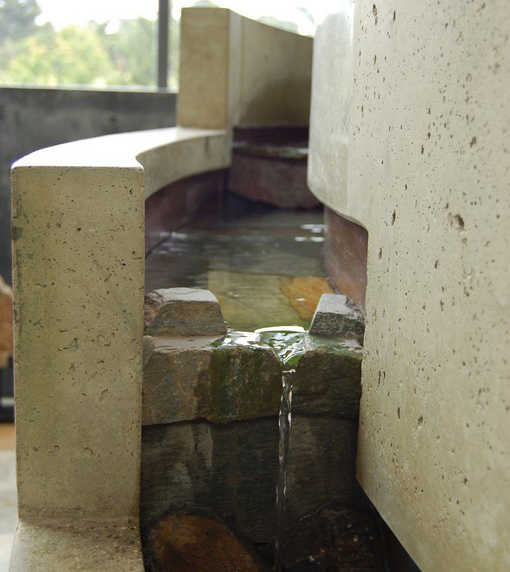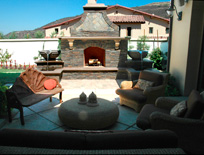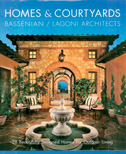design
It’s frequently tough to figure out how a person ever finds his or her way into a specific line of work. In my case, for example, I more or less fell into the faux-rock trade, never imagining that what seemed like a blind stumble would ultimately unlock my imagination in a whole range of unexpected ways. It all started when I was working in the oil industry in Alaska in the 1980s. When petroleum prices dropped, I was out of work and moved back to my home town of Tucson, Ariz., where I was hired as a laborer by the Larson Company, which was among the trailblazing firms starting to work in faux rock. I began by mixing concrete and did my fair share of grunt work. As luck would have it, I began showing some artistic promise and in a relatively short time found myself working on major projects and learning the process literally from the ground up. After a couple of hard years, I became a superintendent, a promotion that led to my involvement in major overseas projects, including aquariums in Tokyo and Osaka, Japan, as well as an extended stay in Italy. These were wonderful, formative experiences, but eventually I struck out on my own and
More than three years ago, I was approached by a talented landscape architect (and good friend) to look at project with an interesting twist: the celebration of the agricultural history of a well-known California city. I’ve long been fascinated by history and have taught the history of art and architecture in a variety of settings, so when Lance Walker (then principal at The Collaborative West, San Clemente, Calif.) called me, I was keenly motivated to hear more about his plan to pay homage to those who had jump-started a major modern community by harnessing a natural watercourse to
By Fu-Tung Cheng I’ve never been entirely comfortable with the term “decorative concrete.” To me, the pairing of the words has always implied that one merely applies material over a substrate in the way a baker might apply icing to decorate a cake. Instead, I see concrete as inherently profound. More than appliqué, it is a medium that has long been used functionally as well as expressively. In my own case, I feel far more creatively engaged in my work when I merge my thinking about those dual potentials of function and art. Historically, in fact, I believe that when the two become an inseparable one, we recognize and celebrate these works as rising to the level of great design. In my own case, I began using concrete as an expressive medium a few decades back, when I was among the pioneers in designing and installing concrete countertops in contemporary kitchens. As both designer and builder, by the year 2000 I had
In creating waterfalls, some watershapers don’t seem to realize is that you can precisely control the sound the falling water makes as it descends from level to another. My goal in paying attention to this detail is to take advantage of
There’s no denying the difficulty of building a high-quality inground pool, but the welcome fact is that the earth can conceal a range of little imperfections, from small leaks to minor structural defects. When you build a pool or some other watershape above grade as an integral component of a multi-story building, however, everything you do is magnified because the work is always exposed. Essentially, you lose the margin for error that might be possible with an inground installation. This past spring, work was completed on two high-rise watershapes our firm engineered as part of L.A. Live, a multi-purpose, entertainment-oriented complex situated near the Staples Center and the Los Angeles Convention Center in downtown Los Angeles. The pool/spa combinations were placed on the fourth and twenty-sixth floors, and although they have simple rectangular forms, they represent the absolute
Not long ago, I was reminded in a big way of the importance of understanding the international nature of our industry. It was July, and my Genesis 3 partners Skip Phillips and David Tisherman and I were on the Gold Coast near Brisbane, Australia, presenting a program at the Splash! Conference – an experience that, once again, underscored the fact that ours is not just a North American business, but is instead a global industry in which people worldwide share
There was a time not long ago when most of my clients wanted swimming pool environments that were designed to suit a design theme of some sort that was separate and distinct from the house. It wasn’t unusual, for example, for clients here in Texas to ask for outdoor areas that replicated Rocky Mountain settings or tropical lagoons. Those projects still come along from time to time, but in the past few years, increasing numbers of my clients want
For professionals who tirelessly commit themselves to excellence in all aspects of their work, challenging projects are the butter on the bread. At Drakeley Swimming Pool Co. of Bethlehem, Conn., we truly enjoy jobs with higher-than-usual degrees of difficulty because they generally involve us with clients who have strong ideas about what they want, force us to develop solutions to unique and interesting problems and see us perform on a level that invariably makes us proud. As we see it, these jobs are the reward we get for years of focusing on doing our absolute best. True, these projects can be tough, but we’ve found that by sticking to our “quality without compromise” philosophy, we’ve managed to thrive through tough times and have always earned our share of interesting commissions. It’s proof of the old adage that good things follow hard work, even in a soft economy. That was certainly
Looking beyond standard modes of operation is nothing new for watershapers: It’s how many of us grow professionally. In my case, for example, I’ve moved in a variety of different directions in my career, and I’ve found that each of these endeavors has added substance and insight to both my business and professional acumen. Some experiences are more valuable than others, of course, but I’ve always found something positive and a few times have watched my business transform and grow before my eyes. Looking back, it’s been quite a journey. I began my career more than 20 years ago with






















The Importance of Watershaping’s Color Palette